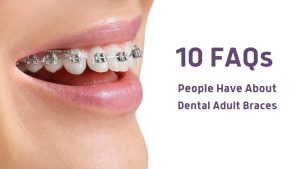About Legacy Orthodontics
Table of ContentsThe Definitive Guide for Legacy OrthodonticsThe Single Strategy To Use For Legacy OrthodonticsGetting The Legacy Orthodontics To WorkUnknown Facts About Legacy OrthodonticsUnknown Facts About Legacy Orthodontics
At Advanced Orthodontics, we offer individuals with a alternative treatment experience. On top of that, we use adjustable therapy schedules, adaptable settlement options and a fun, satisfying experience. braces. Phone call ( 480) 357-4900 today for more details and routine a consultation.An orthodontist is a dental practitioner trained to diagnose, stop, and deal with teeth and jaw abnormalities. They remedy existing conditions and are trained to identify troubles that might establish in the future. Orthodontists function with individuals of any ages, from youngsters to adults. People often connect an ideal smile with healthiness.
Malocclusion, or misaligned teeth, can cause dental problems, including dental caries, gum tissue illness, and challenging or painful eating. Not every person is born with straight teeth. If you have a bad bite or large rooms between your teeth, you might desire to get in touch with a dentist focusing on orthodontic care.
Legacy Orthodontics Things To Know Before You Buy
( Photo Credit Scores: DigitalVision/Getty Images) Orthodontists make use of taken care of and detachable dental gadgets, like braces, retainers, and bands, to transform the setting of teeth in your mouth. Orthodontic treatment is for dental problems, including: Uneven teethBite troubles, like an overbite or an underbiteCrowded teeth or teeth that are too much apartJaw misalignmentThe goal of orthodontic therapy is to boost your bite.
A healthy and balanced bite guarantees you can eat, chew, and speak appropriately. While you may consider orthodontists as generally for kids or teenagers who need dental braces, they can deal with dental issues at any age. Orthodontists participate in college, oral school, and orthodontic college. After graduation, they invest 2 or 3 years in an orthodontic residency program.
All orthodontists are dental practitioners, however not all dental practitioners are orthodontists. Orthodontic residency programs provide extensive, concentrated guideline for dental professionals. They focus on two locations: How to effectively and securely relocate teeth How to properly direct advancement in the teeth, jaw, and faceOnce an orthodontist has completed training, they have the option to come to be board certified.
Legacy Orthodontics - Truths
Misalignment, or malocclusion, is one of the most usual reason individuals see an orthodontist. It is genetic and is the result of dimension differences between the top and reduced jaw or in between the jaw and teeth. Malocclusion leads to tooth congestion, an irregular jaw, or irregular bite patterns. Malocclusion is generally treated with: Your orthodontist affixes metal, ceramic, or plastic square bonds to your teeth.
If you have just small malocclusion, you may have the ability to use clear dental braces, called aligners, as opposed to standard dental braces (https://www.goodreads.com/user/show/182420256-brian-mccune). Some people need a headgear to help relocate teeth into line with stress from outside the mouth. After braces or aligners, you'll need to put on a retainer. A view retainer is a custom-made tool that maintains your teeth in area.
They can create extra space in the mouth without having to draw teeth. Orthodontists utilize cables, medical screws, or plates to sustain your jaw bone.
You may require to see an orthodontist if you have: Crowding or not enough area for all of your teethOverbite, when your upper teeth come by your bottom teethUnderbite, when your bottom teeth are as well far forwardSpacing or problems with gapsCrossbite, which is when your upper teeth fit behind your bottom teeth when your mouth is closedOpen bite or a vertical space between your front bottom and top teethMisplaced midline, when the facility of your base and upper teeth don't line up Correcting an oral malocclusion can: Make attacking, chewing, and speaking easierImprove the balance of our face and your overall appearanceEase pain from temporomandibular joint problemsSeparate your teeth and make them simpler to cleanse, assisting avoid dental caries or tooth cavities It's often a dental practitioner who initially notifications misaligned teeth during a regular test.
Examine This Report about Legacy Orthodontics

During your first orthodontic appointment, you'll likely have: A dental examPhotos taken of your face and smileDental X-raysPanoramic (360 level) X-rays of your face and headImpressions to produce mold and mildews of your teethThese tests will certainly assist your orthodontist know how to proceed with your therapy. clear braces. An orthodontist is a dental professional who's had training to treat your teeth and jaw
An orthodontist is focused on your bite, so something like a broken tooth would certainly be taken care of by a dental practitioner. Orthodontists are focused on your bite, or the way your teeth fit together, and the straightness of your teeth.
Ever before wondered how celebrities constantly seem to have completely straightened teeth? Orthodontists are dental professionals who concentrate on correcting abnormalities in the teeth and jaws.
6 Simple Techniques For Legacy Orthodontics

While braces are one of the most commonly identified orthodontic therapy, orthodontists have a varied toolkit at their disposal. The specific method selected depends on the seriousness of the situation, the individual's age, and individual preferences. These tried-and-true braces use a system of brackets bonded to the teeth and attached by cords.
These detachable trays are custom-made to considerably move the teeth's placement. In instances of narrow jaws, palatal expanders can be used to create area for appropriate tooth alignment.